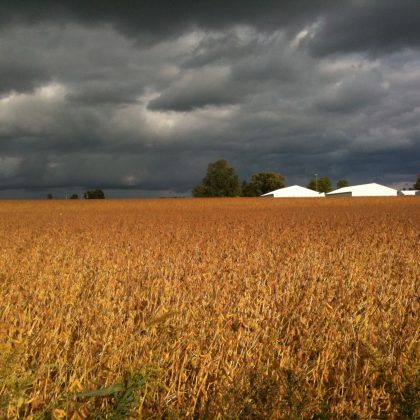Crop models and the grand challenges for the 21st century
The paper “Grand challenges for the 21st century: what crop models can and can’t (yet) do“, published in The Journal of Agricultural Science, has been chosen as the latest Editorial Highlight.
The stakes are high! Agriculture must provide food and nutrition security for the world’s growing population, ensuring no land use change and loss of biodiversity, while adapting and mitigating negative impacts of climate change now and in the future. These grand challenges put crop production at the heart of a ‘perfect storm’. Crop models have proven to be essential tools for evidence-based ex-ante assessments by exploring scenarios to support policy responses and tackle these grand challenges. Most notably, and thanks to crop models, we can know how much food can be produced within the planetary boundaries now and in the future. How else can we explore how the main crops will be affected and respond to climate change?

Crop models are essentially complex hypotheses that come in many forms and are designed for different purposes. The breadth of crop models and their uses in deepening our knowledge is reflected in the contributions of about 400 scientists from 48 countries to the Second International Crop Modelling Symposium (iCROPM2020), that was held in February 2020 in Montpellier, France. Climate change impact assessments, mostly through the simulation of yields for the major cereal crops, are a central focus of the research that was reported.
Climate change rightly deserves the attention of the crop modelling community. Yet, climate change impact assessments involve huge uncertainty. No matter how good the crop models, our ability to predict the weather decreases exponentially with increasing time horizons. Crop models can assist in designing responses in terms of management options to address climate variability in the short-term. However, there is evidence that designing management options for the climate predicted several decades into the future, as is the focus of many crop modelling studies, can lead to maladaptation in the short term.
Crop models must be embedded within a well-described context if they are to be relevant in the design of policies to tackle the grand challenges and to avoid misuse of scientific evidence by different stakeholders. This is best achieved through the adoption of a multi-scale, multi-dimensional and multi-stakeholder approach, a key feature of integrated assessments of agricultural policies. Yet few research teams seem to be rising to this challenge. In particular, studies to contextualize crop model outputs at farm level are few and far between, despite this being a key level at which trade-offs occur when farmers make decisions on allocation of scarce resources.
Looking ahead there is no doubt crop models will continue to play a central role in agricultural research. Model improvement should remain high on the agenda to fill existing knowledge gaps, which can only be done through a research cycle combining ‘experimentation’ and ‘simulation’. Scientists must also comply with quality control systems to ensure the credibility (‘Is the thing done right?’), saliency (‘Is this the right thing to do?’) and legitimacy (‘Is there a right to do this?’) of their crop models. Only then will crop models become trusted tools for policy advice and be able to realize their full potential to address the grand challenges faced in agricultural systems for the coming decades.
The Journal of Agricultural Science Editorial Highlights are selected by the Editor-in-Chief and are freely available for one month. View the recent selections here.





